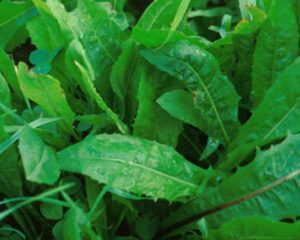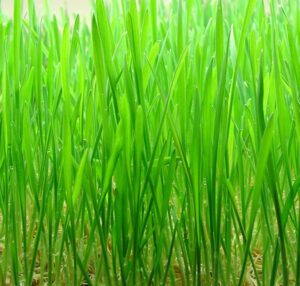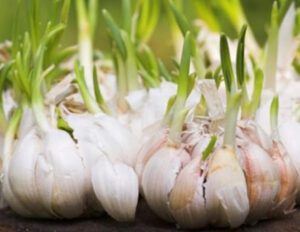Growing kohlrabi organically in home garden is very easy, enjoyable and pleasuring. Because kohlrabi plants are fast-growing and they become ready for harvesting within just a few weeks after planting. It is actually a cool-season crop and you can try growing kohlrabi in spring or fall.
Kohlrabi is a biennial vegetable and is the same species as broccoli, Brussels sprouts, cabbage, cauliflower, kale and savoy. It is also known by some other local names in many different parts of the world.
It’s other names include German turnip, Turnip cabbage, Su hao, Ol kopi, Monj-hakh, Hakh, Nol khol, Navilu kosu, Nol col, Kouloumpra etc.
Kohlrabi can be eaten raw or cooked in many different ways. But the stems are generally used raw in salad or slaws. It has a texture similar to that of a broccoli stem, but with a flavor that is sweeter and less vegetal. The leaves are also edible and can be used interchangeably with collard greens and kale.
Kohlrabi is nutritious and rich in sugars, dietary fiber, vitamins and minerals. Along with it’s uses as human food, some varieties of kohlrabi are also grown as cattle feeds.
However, if you like this vegetable, then you should try growing kohlrabi organically in your home garden. Because taste and flavor of the home grown kohlrabi is much better.
How to Grow Kohlrabi Organically
Growing kohlrabi organically in your home garden is very easy. The plants grow faster and become ready for harvesting within a very short period of time.
So, you can start growing kohlrabi in your home garden easily. Here we are describing more about the steps of growing kohlrabi organically in home garden from planting, caring to harvesting.
Choose a Variety
There are several kohlrabi varieties available to choose from. White Vienna, Purple Vienna, Grand Duke, Superschmelz, Purple Danube and White Danube are some commonly available varieties.
Consult with any home gardeners in your area for better recommendation for choosing a variety.
Purchase Seeds/Transplants
You can start growing kohlrabi either from seeds or from transplants. So purchase either the seeds or transplants.
You can purchase the transplants from your nearest nurseries. And kohlrabi seeds should be easily available in any of your nearest market.
Best Time for Growing Kohlrabi
Kohlrabi is a cool-season crop and best grown during the winter season.

Preparing the Soil
Kohlrabi grows well in fertile soil which is rich in lots of organic materials. So, you have the prepare the soil by adding lots of organic materials.
Just till the soil and add organic fertilizers into it. Well-rotted aged manure and homemade compost will be very good for this purpose.
Planting
If you want to start from seeds, then you can start the seeds indoor. And then transplants the seedlings when they are 4-6 weeks old.
When planting seeds, level the soil and spread seeds. Place the seeds 1/4 to 1/2 inch deep and about 2-5 inches apart. Water after sowing the seeds. The kohlrabi seeds generally germinate very fast.
In case of growing kohlrabi from transplants, plant the transplants in the prepared soil 6-8 inches apart in rows. And the rows should be 10-12 inches apart. Water immediately after planting the transplants.
Caring for the Kohlrabi Plants
Kohlrabi plants are very easy to grow and they require relatively less care and management. Although taking additional will ensure good growth of the plants. Here we are describing everything about caring kohlrabi plants.
Fertilizing: Kohlrabi plants don’t require additional fertilizers if you have prepared the soil perfectly by tilling and adding organic fertilizers.
Watering: Kohlrabi plants grow well if you can keep the soil moist constantly. So watering regularly is important. Water about 1-1.5 inch per week if it doesn’t rain.
Mulching: Mulching helps to retain moisture in the soil, and keep the soil cool. And it also helps to control weeds from your garden. Use straw, hay, grass clippings, dry leaves or homemade compost for mulching.
Controlling Weeds: Weeds consume nutrients from the soil and will hamper the growth of kohlrabi plants. So controlling them is important. You should remove the weeds from garden while preparing the soil. And control additional weeds by hand.
Pests and Diseases
Kohlrabi plants are less susceptible to the common garden pests and diseases. Although the plants can be affected by aphids, cabbageworms, root maggots and other caterpillars.
Remove the affected leaves and plants from the garden. And using homemade organic insecticides will also be very helpful for controlling all these pests.
The kohlrabi plants can also be affected by some common diseases such as black rot and clubroot diseases.
Crop rotating and destroying the affected leaves and plants will be effective for preventing this disease.
Harvesting
Kohlrabi become ready for harvesting within a very short period of time after planting. Actually you can harvest kohlrabi at any time when they reach your desired size.
Timely harvesting will ensure milder kohlrabi with sweeter flavor. But you should not wait too long for harvesting, because the aged kohlrabi will be too tough and will not taste good.
These are the common steps for growing kohlrabi organically in home garden. Hope you have enjoyed this guide! Good luck!






